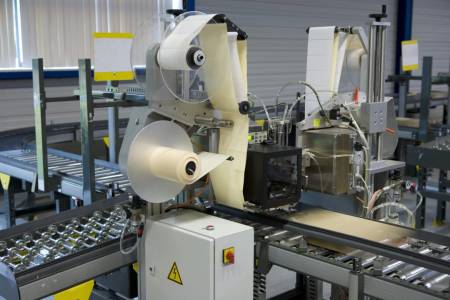Description
The Paper Industry: A Comprehensive Overview
The paper industry is a vast and complex global network encompassing everything from the sourcing of raw materials to the delivery of finished paper products. This description provides a detailed look at its various facets.
Raw Materials & Production:
The foundation of the paper industry lies in its raw materials, primarily wood pulp. However, other fibers such as recycled paper, cotton rags, and straw are also utilized, creating distinct product types and influencing sustainability profiles. The production process itself is intricate, typically involving these steps:
- Wood Harvesting & Processing: Sustainable forestry practices are increasingly crucial here, ensuring responsible sourcing and reforestation efforts. Logs are transported to mills for pulping.
- Pulping: This crucial stage involves breaking down wood fibers into pulp using mechanical or chemical methods. Mechanical pulping preserves more of the wood fibers, leading to stronger but less bright paper. Chemical pulping yields brighter, finer fibers, suitable for high-quality printing paper.
- Bleaching (Optional): Many paper types undergo bleaching to enhance brightness. The industry is progressively adopting environmentally friendly bleaching techniques.
- Stock Preparation: The pulp is refined and mixed with additives like fillers (clay, calcium carbonate) and sizing agents to achieve desired properties like opacity, smoothness, and printability.
- Paper Machine Operation: The pulp slurry is formed into a continuous sheet of paper on a high-speed paper machine, where water is removed, the sheet is pressed and dried, and finally, it's calendered to achieve desired surface texture and smoothness.
- Finishing & Converting: The paper undergoes various finishing processes, such as coating, cutting, rolling, and perforating, depending on the final product's intended use. Converting processes transform basic paper into specialized products like corrugated boxes, paper bags, and tissue paper.
Product Categories:
The paper industry creates a diverse range of products, categorized by several factors including:
- Paper Grade: This reflects the quality and intended use. Examples include:
- Printing & Writing Papers: Used for books, magazines, newspapers, and stationery. Grades vary based on brightness, opacity, and smoothness.
- Packaging Papers: Includes corrugated board, kraft paper, and special-purpose packaging papers. Strength, durability, and printability are key factors.
- Tissue Papers: Soft, absorbent papers used for hygiene products like toilet paper, facial tissue, and paper towels.
- Specialty Papers: This broad category includes papers designed for specific applications like labels, filter paper, and photographic paper.
- Paper Weight & Size: Paper is produced in various weights (grams per square meter) and sizes, dictating its suitability for different applications.
Market & Economic Impact:
The paper industry is a significant economic driver, providing employment in forestry, manufacturing, transportation, and retail. Market dynamics are influenced by:
- Global Demand: Demand varies across regions and product types, driven by factors like population growth, economic development, and consumption patterns.
- Technological Advancements: Innovations in pulping, papermaking, and converting processes are constantly improving efficiency and sustainability.
- Environmental Concerns: The industry is increasingly focused on reducing its environmental impact through sustainable forestry practices, efficient water usage, and waste reduction.
- Recycled Paper Usage: The utilization of recycled fibers is a key factor in promoting sustainability and resource conservation.
- Competition & Consolidation: The industry is characterized by a mix of large multinational corporations and smaller specialized producers, with ongoing consolidation trends.
Future Trends:
The paper industry faces both challenges and opportunities:
- Sustainability Initiatives: Increased focus on reducing environmental impact through circular economy principles and sustainable sourcing.
- Technological Innovation: Advancements in digital printing and e-commerce are impacting paper consumption for traditional print media.
- Innovation in Packaging: Development of eco-friendly and functional packaging solutions.
- Demand for Specialized Papers: Growth in sectors demanding high-performance specialty papers, such as industrial and medical applications.
This overview highlights the key aspects of the paper industry. Its complexity demands a deeper understanding of individual segments and specific applications for a complete picture.
